April 17, 2025 | 18:28 GMT +7
April 17, 2025 | 18:28 GMT +7
Hotline: 0913.378.918
April 17, 2025 | 18:28 GMT +7
Hotline: 0913.378.918
In recent years, a drop in the price of raw materials and weak investment of sugarcane factories have led to a number of sugarcane growing areas in Thanh Hoa province changing to other more efficient crops such as fruit and green ramie.
The areas that have been converted to other crops with outstanding economic efficiency are recognized as hard to return to growing sugarcane. Therefore, to maintain stable production, sugar mills in Thanh Hoa province have to enter the fierce competition to keep their sugarcane material areas.
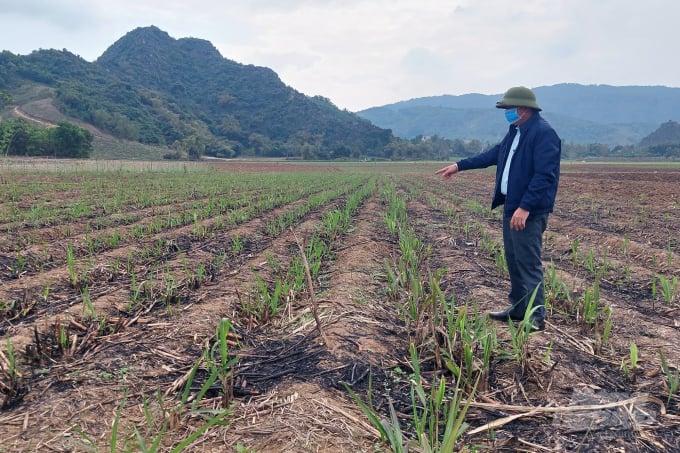
Sugarcane material areas are facing fierce competition with many other crops. Photo: VD.
Mr. Nguyen Xuan Phuong, Vice Chairman of the People's Committee of Cam Tu commune, Cam Thuy district, said Cam Thuy's sugarcane granary which used to cover an area of 250ha, now has been reduced to only 50-60ha. The reason is that some farmers who own high hills once were used for growing sugarcane, now have converted to growing acacia while others have switched to growing green ramie-the new crps found to bring in more economic efficiencies than sugarcane.
“The area for sugarcane cultivation before, which now has been converted to acacia cultivation, is mainly sloping land. Some of them that have not been flooded are converted to green ramie with a long retention period of 10 years and initially show higher economic efficiency than sugarcane. With such advantages, changing back from acacia and green ramie to sugar cane is very unlikely to happen.
“It is only relevant to change from cassava into sugarcane, but in fact, the area of cassava here is not much. We are mobilizing people to increase the area of ramie, not to restore the sugarcane area," said Mr. Phuong.
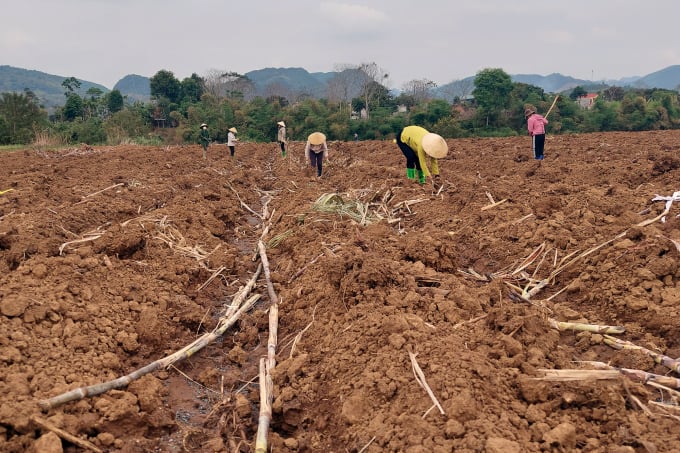
Thanh Hoa farmers plant new sugarcane for the yearly crop 2022 - 2023. Photo: VD.
Representatives of some localities in Thanh Hoa province said that at present, the total area of sugarcane and cassava has been relatively stable but will commonly suffer the same competition with newly emerged crops such as green ramie or fruit. In fact, besides converting to other crops with higher economic efficiency, in the past few years, whenever the sugarcane area decreases, the cassava area will increase and vice versa.
The above situations will put Thanh Hoa's sugar mills in raw material competition in the context that the industry is showing signs of recovery, while cassava price is restoring, and the total growing area is also increasing in many places.
Mr. Cao Van Cuong, Director of Thanh Hoa Department of Agriculture and Rural Development (DARD), said that over the years, the province has promulgated many policies to maintain the sugarcane material area. However, it is obvious for farmers to change their areas of cassava and sugarcane into other crops with higher economic efficiency.
Cuong himself also supported a plan to convert some inefficient sugarcane areas to other crops. To cope with this situation, the agricultural industry together with local authorities and sugar mills must take drastic action to maintain raw material areas.
Large fields applying scientific and high-tech advances in growing high-quality sugarcane varieties and investment policies with deferred loans for sugar mills are important factors for sugarcane and farmers to survive.
According to Thanh Hoa DARD, in the coming time, Thanh Hoa will maintain an area of about 16.500ha of raw sugarcane and continue to improve productivity and output. However, whether the raw material area is maintained or not depends much on price and productivity. After all, it is still the story about the economic efficiency of sugarcanes.
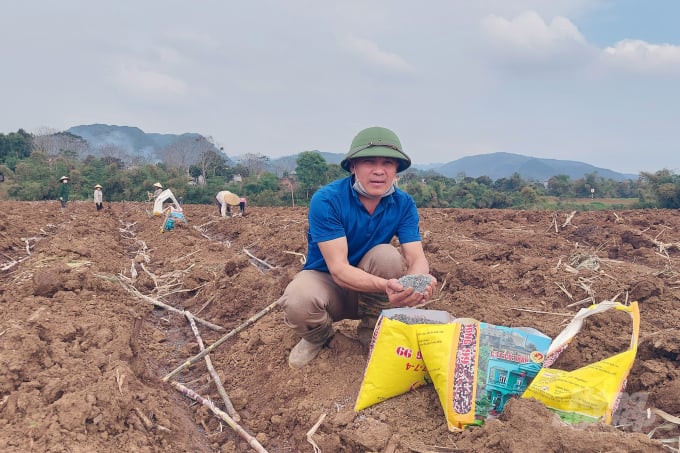
Without stronger policies, it is difficult for sugar mills to keep their material areas in the coming years. Photo: VD.
Leading us to a sugarcane field of 70ha, Mr. Nguyen Van Doan, Director of Agricultural Service Cooperative of Thach Cam commune (Thach Thanh district) excitedly said: “This field can give an average yield of 120 tons/ha if farmers have good conditions to invest in intensive farming.”
The average sugarcane yield in Thach Cam can reach 90 tons/ha if the price of raw cane is stable and farmers can earn a profit. This year, more than 50% of the planting and harvesting process has been mechanized, thus reducing the labor cost and increasing the economic efficiency higher than that of a few years ago. If sugarcane factories have more investment policies to stimulate consumption, farmers will have better conditions to improve yield and quality of their raw material products."
Although in 2021, Thanh Hoa DARD had consulted with factories to implement policies to support sugarcane growers, Mr. Doan still thinks that farmers can not feel secure.

Sugarcane seems to be weak in competing with many other fruits, industrial, and even forestry plants. Now it can only "compete" with cassava. Photo: Vo Dung.
Mr. Nguyen Dong Duong, a household farmer with a high capacity of investment in intensive sugarcane farming, frankly shared: "Here, many households have fertile sugarcane land, but "exhaustion" due to continuous losses in 3-4 crops has made them unable to reinvest. Many households can only achieve a sugarcane yield of 20-30 tons/ha. This has dragged down the average yield of sugarcane growers in Thach Cam commune. I think ... more than ever, sugar mills need to be more drastic to keep their raw material areas."
According to Thanh Hoa DARD, to cope with such difficulties of the sugar industry and sugarcane growers, in the 2021-2022 crop year, the province has issued many policies to support the development of material areas.
Various new sugarcane varieties have been produced including 13 key varieties. By the end of February 2022, Thanh Hoa had established 47 sugarcane growing cooperatives, of which 19 are directly established by Lam Son Sugar Joint Stock Company.
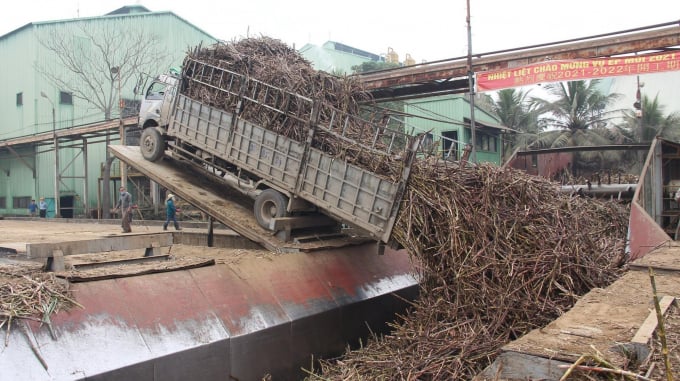
Sugarcane growers have not been adequately supported by sugar mills. Photo: Vo Dung.
In the current situation, while sugarcane material area is facing fierce competition with other crops. the sugar mills have not really been interested in a proper plan to preserve their raw material areas. If so, the goals set out by Thanh Hoa province’s agricultural sector will face many challenges.
Along with supporting policies, Thanh Hoa determined that in the coming time, sugarcanes and sugarcane products are still the main crops of the province. The sugar industry will continue to make an important contribution to socio-economic stability in rural and mountainous areas creating products under the linkage of production and processing bringing added value to the local economy.
Thanh Hoa plans to develop sugar cane in the near future to 16,500ha. In the period of 2021 - 2025, sugarcane yield is targeted to reach 70 tons/ha so to get sugar productivity of 110,000 – 120,000 tons/year.
Translated by Trang Nguyen

(VAN) With an annual production scale of around 5 million tons, Vietnam has enough potential to transform rice bran into a key export commodity if combined with deep processing.
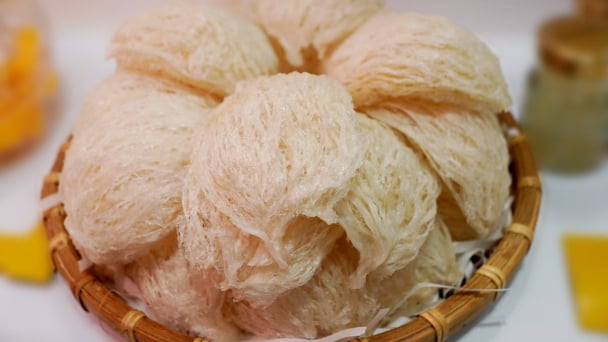
(VAN) As the world’s largest consumer of bird’s nest products, China is gradually becoming a 'golden' market for Vietnamese bird’s nests.
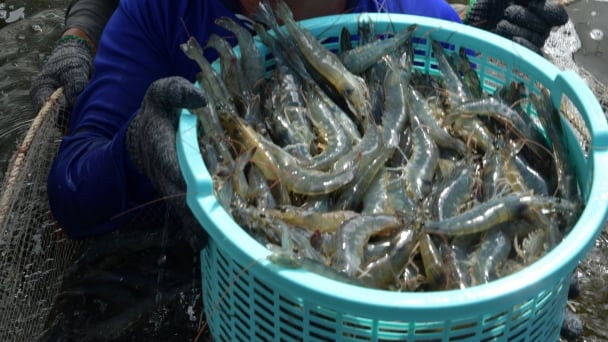
(VAN) Deputy Minister Phung Duc Tien has directed the fishery sector to diversify its farming objectives during the conference reviewing Q1 performance and outlining tasks for April and Q2/2025.

(VAN) Consumption and production falls in almost every market as industry fears a ‘generational’ change in drinking habits.
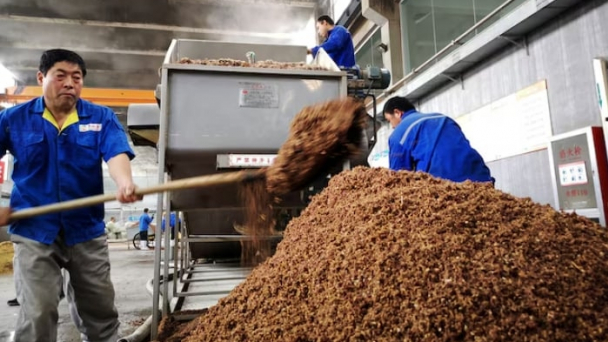
(VAN) U.S. President Donald Trump's trade war with China comes at a bad time for sorghum growers like Dan Atkisson in Kansas, who is nevertheless preparing to increase plantings by 25% this spring.
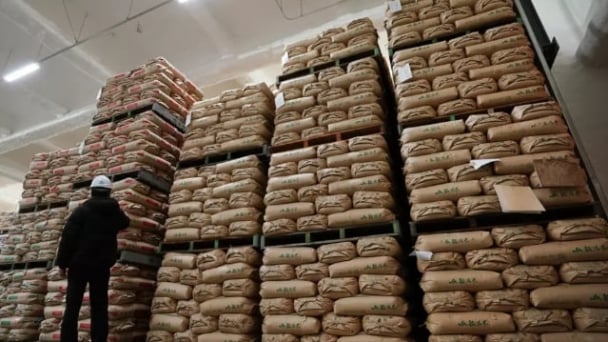
(VAN) Japan will sell more rice from its emergency stockpile through July in an attempt to stabilise soaring prices, the agricultural minister said.

(VAN) The Philippines is making efforts to diversify its rice import sources in order to reduce its dependence on Vietnamese rice. However, Vietnamese rice has managed to maintain its strong position in this market.